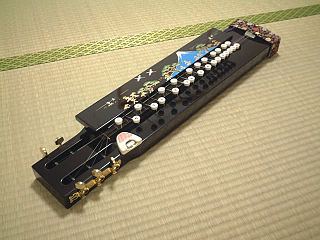Taishokoto
Taishōgoto
Japanese musical instrument
The taishōgoto (大正琴), or Nagoya harp, is a Japanese stringed musical instrument. The name derives from the Taishō period (1912–1926) when the instrument first appeared. It has also become naturalized in East Africa, often under the name Taishokoto.[1]
This article needs additional citations for verification. (April 2021) |

There are 4 types available, soprano has 5 or 6 strings, alto has 4 or 5 strings, tenor and bass has 1 or 2 string.
Tuning in G octave for melody strings and D for drone string.